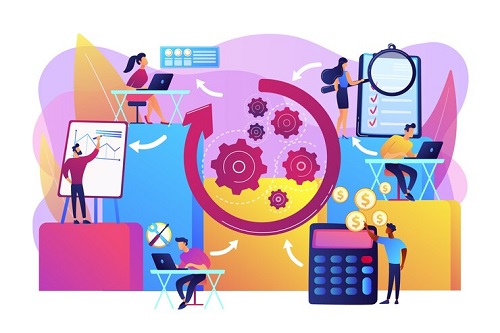In the fast-paced world of software development, delivering high-quality products quickly and efficiently is more important than ever. Enter DevOps and CI/CD—two practices that have revolutionized the way teams build, test, and deploy software. This blog will delve into the core principles of DevOps and how continuous integration (CI) and continuous deployment (CD) are transforming software development.
Introduction to DevOps and CI/CD
DevOps is a cultural and professional movement that emphasizes collaboration between software developers and IT operations. It aims to shorten the development lifecycle while delivering features, fixes, and updates frequently in close alignment with business objectives.
Continuous Integration (CI) is a development practice where developers integrate code into a shared repository frequently, preferably several times a day. Each integration is verified by an automated build and tests to detect errors quickly.
Continuous Deployment (CD) takes CI a step further by automatically deploying all code changes to a testing or production environment after the build stage. This ensures that software can be reliably released at any time.
The importance of CI/CD in modern software development cannot be overstated. These practices help teams deliver software faster, with fewer bugs, and with greater confidence. Adopting DevOps practices can lead to improved collaboration, faster time-to-market, and more reliable software delivery.
Core Principles of DevOps
Collaboration and Communication
Breaking down silos between development and operations teams is crucial for a successful DevOps implementation. Collaboration and communication are at the heart of DevOps, enabling teams to work together more effectively. Tools like Slack, Microsoft Teams, and Jira facilitate communication and collaboration, ensuring that everyone is on the same page.
Automation
Automation is a cornerstone of DevOps, streamlining CI/CD processes and reducing manual intervention. By automating repetitive tasks, teams can focus on more strategic work. Tools like Jenkins, GitLab CI, and CircleCI help automate builds, tests, and deployments, making the software delivery process more efficient and less error-prone.
Continuous Improvement and Feedback
Continuous monitoring and feedback loops are essential for refining processes and improving product quality. By collecting and analyzing data from various stages of the development lifecycle, teams can identify areas for improvement and make informed decisions. Feedback helps in refining processes, ensuring that the product evolves to meet user needs and expectations.
Continuous Integration Practices
Frequent Code Integration
Frequent code integration is a practice that helps avoid “integration hell,” where merging code changes becomes a complex and error-prone task. By integrating code changes frequently, teams can catch and fix bugs early. Version control systems like Git play a crucial role in CI by managing code changes and facilitating collaboration among developers.
Automated Testing
Automated testing is vital for ensuring code quality and reliability. Different types of tests, such as unit, integration, and functional tests, play distinct roles in CI. Unit tests verify individual components, integration tests ensure that different components work together, and functional tests validate the software’s functionality from an end-user perspective. Together, these tests help maintain high code quality and reduce the risk of defects.
Continuous Deployment Strategies
Infrastructure as Code (IaC)
Infrastructure as Code (IaC) is a practice that involves managing and provisioning infrastructure through code rather than manual processes. IaC is significant in CD as it ensures that environments are consistent and reproducible. Tools like Terraform and Ansible help manage infrastructure, making it easier to deploy applications reliably and at scale.
Blue-Green Deployments
Blue-green deployment is a strategy that minimizes downtime and risk by running two identical production environments—one active (blue) and one idle (green). When a new version of the software is ready, it is deployed to the idle environment. Once verified, traffic is switched to the new environment. This strategy is particularly useful in scenarios where downtime is unacceptable, such as e-commerce sites or financial services.
Overcoming Challenges in CI/CD
Managing Complex Environments
Managing complex and diverse environments is a common challenge in CI/CD. Containerization and orchestration tools like Kubernetes offer solutions by providing a consistent and scalable way to deploy applications across different environments. Containers encapsulate applications and their dependencies, ensuring that they run consistently regardless of the underlying infrastructure.
Security and Compliance
Integrating security practices into CI/CD pipelines is crucial for ensuring that software is secure and compliant with regulations. Tools like Snyk, SonarQube, and OWASP ZAP can be integrated into CI/CD pipelines to automatically scan for vulnerabilities and enforce security policies. Ensuring compliance involves adhering to industry standards and regulations, which can be achieved through automated compliance checks and audits.
The Future of DevOps and CI/CD
The DevOps landscape is continuously evolving, with emerging trends and technologies shaping its future. Artificial intelligence (AI) and machine learning (ML) are increasingly influencing CI/CD practices by automating complex tasks, predicting failures, and optimizing processes. As these technologies mature, they will likely play a more significant role in DevOps, enabling even faster and more efficient software delivery.
Speculating on the future evolution of DevOps principles, we can expect a greater emphasis on security, increased adoption of serverless architectures, and more sophisticated automation tools. These advancements will further enhance the ability of teams to deliver high-quality software quickly and reliably, ultimately transforming the software development landscape.
As we unlock the potential of seamless CI/CD through DevOps principles, the software development process becomes more agile, collaborative, and efficient, paving the way for innovation and success in the digital age.



